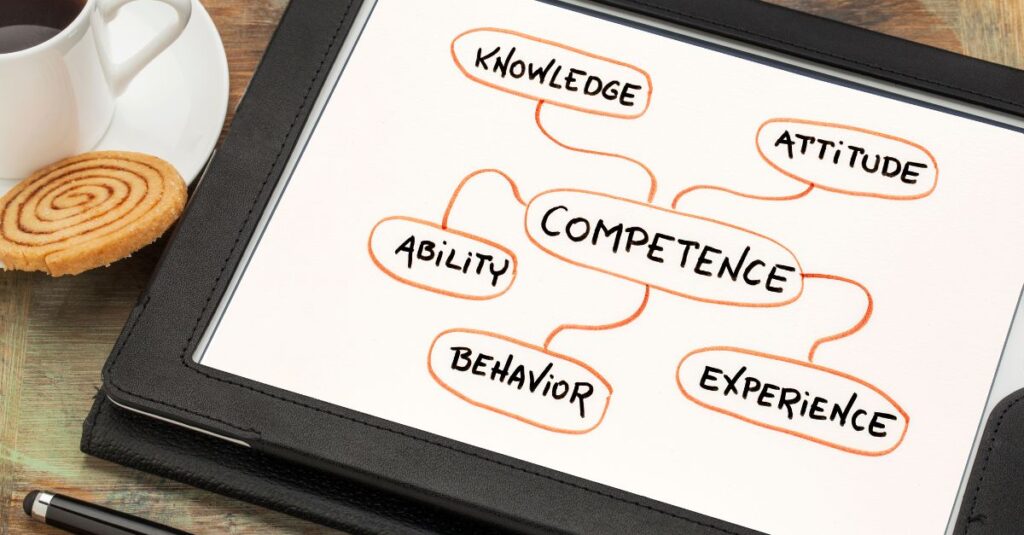Nearshore talent assessment is an increasingly important aspect of hiring for companies looking to expand their workforce beyond their native borders. It offers a significant advantage when seeking skilled professionals who can contribute to the business’s success while maintaining cultural and language compatibility. By understanding the nuances of this hiring strategy, organizations can ensure they build high-performing teams backed by the right talent.
When assessing and hiring nearshore talent, it is essential to explore various factors, from the candidates’ communication skills to their educational background and certifications. With the growing complexity of IT projects, ensuring a seamless integration of the nearshore workforce into the organization demands the proper assessment methods and prioritizing technical and cultural alignment.
Key Takeaways
- Nearshore talent assessment helps companies hire skilled professionals while maintaining cultural and language compatibility.
- A thorough evaluation of a candidate’s educational background, certifications, and skills is crucial for building high-performing teams.
- Maintaining a balance between technical expertise and cultural alignment is essential for seamlessly integrating the nearshore workforce.
Understanding Nearshore Talent Assessment
Relevance of Nearshore Talent Assessment
As businesses expand globally, we find it increasingly essential to assess nearshore talent for our companies. Nearshore talent assessment enables us to explore different recruitment strategies and skill mapping to choose the best candidates for our teams. By considering candidates in nearby regions, we can access a diverse talent pool and take advantage of time zone alignment, cultural similarities, and cost savings.
A critical aspect of nearshore talent assessment is developing effective nearshore recruitment strategies. As part of our process, we identify suitable countries, target specific skill sets, and adapt our interview techniques to cater to candidates from different cultural and linguistic backgrounds. We also use innovative hiring techniques such as remote interviews and online skill tests to select only the most qualified and compatible candidates.
The Evolution of Nearshore Talent Assessment
In recent years, nearshore talent assessment has evolved significantly. We now have access to a wealth of information and tools to streamline and optimize our hiring processes. For example, leveraging data analytics and AI-powered platforms help us make more informed decisions and connect with potential candidates more effectively.
The concept of nearshore skill mapping is key to this evolution, allowing us to map candidates’ skills and competencies against our organization’s requirements. This process involves identifying crucial skills relevant to our industry, breaking them down into specific roles and tasks, and then evaluating candidates against these criteria. By understanding the skills and expertise available in nearshore countries, we can design our recruitment campaigns more efficiently and drive better results.
In summary, understanding nearshore talent assessment helps us tap into a valuable resource in the form of skilled professionals nearby. By employing modern recruitment strategies and skill mapping techniques, we can build effective teams that contribute to our organization’s success.

Techniques for Nearshore Talent Assessment
Assessing Technical Proficiency
When assessing nearshore talent, we must consider the candidate’s technical proficiency. This can be achieved through various specialized interview techniques to evaluate a candidate’s skills, knowledge, and potential to fill a vacant position. For example, we might conduct live coding challenges or online tests to assess a candidate’s problem-solving abilities, programming skills, and familiarity with relevant tools and languages. It is essential to determine a candidate’s competencies to ensure the success of our nearshore collaboration.
Furthermore, evaluating a candidate’s language and communication skills is vital when hiring nearshore tech talent. Since we’ll be working together remotely, excellent communication skills are a prerequisite for smooth collaboration between teams.
Leveraging Remote Evaluation Tools
To streamline the talent assessment process, we must leverage remote talent evaluation tools. These tools enable us to conduct various assessments efficiently while allowing candidates to participate from anywhere.
One such tool includes online testing platforms tailored to our needs, helping us gauge candidates’ technical abilities and fit within our organization. These platforms can deliver valuable insights into a candidate’s thought process, highlighting their strengths and potential areas for improvement.
Additionally, video interviews can help us better understand the candidate’s personality, communication, and problem-solving skills. This method allows us to observe non-verbal cues and assess their suitability for the role and our organization’s culture.
By employing these techniques and tools for nearshore talent assessment, we can effectively identify and hire the best candidates, ensuring our projects are completed successfully and our organization continues to grow and thrive.

Evaluating Cultural and Language Fit
Assessing Cultural Fit
When assessing nearshore talent, evaluating their cultural fit with our organization is vital. A solid cultural fit can lead to better cohesion, collaboration, and ultimately more successful outcomes. To achieve this, we must collect the correct data and ask the right questions during the interviewing process.
One effective method is to have candidates describe their previous teams and work experiences. By gauging their preferences and the growth in the size of their teams, we can understand how well they will fit into our organizational culture. Moreover, it’s essential to consider their ability to adapt to new environments, work styles, and communication skills.
A few strategies to assess cultural fit include:
- Using behavioral interview questions
- Presenting real-life scenarios
- Measuring their alignment with organizational values
Evaluating Language Proficiency
Another critical factor in assessing nearshore talent is language proficiency. Strong language skills can enhance team communication and collaboration, ensuring that projects run smoothly. To accurately measure language proficiency, we should consider adding the following elements to our evaluation process:
- Testing: Conducting standardized tests for written and spoken language skills can help us objectively evaluate the candidate’s proficiency. This could include tests like TOEFL, IELTS, or industry-specific language assessments.
- Interviews: Including a portion of the discussion in the target language helps to evaluate the candidate’s ability to communicate effectively in real-life situations. This can also help identify any challenges they might face adapting to the working environment.
- Practical exercises: Assigning tasks or projects in the target language can test candidates’ language skills while assessing their ability to perform job-related tasks.
In conclusion, understanding cultural fit and language proficiency is essential to nearshore talent assessment. By incorporating these evaluations into our hiring process, we can improve the likelihood of successful team integration and project execution.

Exploring the IT Education Landscape
Importance of Local IT Education
Local IT education plays a vital role in shaping the nearshore talent pool. A strong foundation in IT education helps develop a skilled workforce, which attracts businesses to consider nearshore teams for their projects. Quality IT education equips individuals with essential technical knowledge and soft skills to excel in today’s competitive market.
We believe that investing in local IT education is crucial for closing the talent gap and fostering economic growth. By focusing on the educational ecosystem and promoting collaboration between academia and the industry, we can ensure that the workforce is better prepared to meet the demands of businesses in need of IT professionals.
Impact on Nearshore Talent Pool
A robust local IT education landscape directly impacts the nearshore talent pool. By producing well-trained IT professionals, local institutions can establish their regions as attractive destinations for businesses seeking nearshore talent. This in turn, contributes to a diverse and skilled talent pool in the nearshore market, making it easier for companies to find suitable candidates for their IT needs.
Moreover, strengthening the local IT education sector can have long-term benefits for individual professionals and the overall regional economy. As the nearshore IT industry grows, so do job opportunities, resulting in increased demand for skilled professionals and enhanced economic prospects for the region.
In conclusion, a solid local IT education landscape is critical for developing a competitive nearshore talent pool. By investing in relevant IT programs and fostering partnerships between academia and the industry, we can help build a thriving ecosystem that benefits both businesses and the regional economy.
Certifications and Skill Benchmarking
Relevance of IT Certifications
In the search for nearshore talent, certifications play a significant role in demonstrating the expertise of technology professionals. Regional IT certifications can better understand a candidate’s skills and ability to meet project requirements within specific locations. While international certifications such as the ones provided by Microsoft or Cisco are widely recognized, regional certifications might vary across nearshore regions.
Especially when considering nearshore tech talent, it is pertinent to recognize and value regional IT certifications, as they may cater to localized demands and employ region-specific technologies. These certifications can help us identify technically proficient individuals with hard and soft skills for a successful partnership.
Understanding Skill Benchmarking
Skill benchmarking is essential in the nearshore talent assessment process as it helps us determine the relative strength of candidates. By conducting a thorough skill gap analysis, we can identify the key competencies that our potential nearshore partners possess.
Comparing skills across nearshore countries enables us to determine the best fit for our specific project requirements. Furthermore, integrating skill benchmark assessments can also aid in future-proofing our organization, as it allows us to identify areas of improvement and realign HR processes to bridge those gaps.
When assessing nearshore talent, adopting a confident, knowledgeable, neutral, and straightforward approach is critical when choosing the best fit for our organizational needs. By valuing regional IT certifications and understanding skill benchmarking, we can make informed decisions that optimize both cost and quality for our projects.

Frequently Asked Questions
What are the key factors for evaluating nearshore talent?
When evaluating nearshore talent, some essential factors are technical skill sets, relevant experience, cultural fit, communication abilities, and work ethics. It is vital to assess candidates’ abilities to execute tasks and solve problems within the scope of your project. Also, ensure that they can effectively collaborate with your in-house team and understand your local culture well.
How can you measure the success of a nearshore team?
Measuring the success of a nearshore team typically involves tracking key performance indicators (KPIs) such as project completion rates, on-time deliveries, productivity improvements, and financial savings. Establish a clear set of goals and benchmarks for your nearshore team, and monitor their progress regularly. Regular feedback sessions and project reviews also helps in identifying areas of improvement and growth.
How can organizations build and maintain case studies for nearshore talent assessment?
Organizations should gather data on their nearshore team’s performance, objectives, and achievements to build and maintain case studies for nearshore talent assessment. This may include collecting information on completed projects, ensuring projects align with the company’s overall business strategy and goals, and documenting the team’s contributions to specific projects and outcomes. Regularly updating case studies with new information helps showcase the value of nearshore teams and aids in continuous improvement.
What steps should be taken to ensure smooth collaboration between in-house and nearshore teams?
Ensuring smooth collaboration between in-house and nearshore teams requires clear communication channels, establishing a common framework for project management, and fostering a strong sense of teamwork. Adapting to different time zones and establishing regular meetings to discuss project updates and address any issues is essential. Implementing tools for effective collaboration and information sharing also helps create a cohesive working environment.
How should nearshore employees be trained and developed?
Training and development of nearshore employees should include a mix of on-the-job learning, formal training sessions, and continuous professional development. This may encompass custom training programs, participation in industry events and conferences, as well as access to relevant resources and tools. Regular feedback and performance evaluations help them refine their skills and actively contribute to the project’s success.
What key roles are usually needed when assembling a nearshore team?
Assembling a nearshore team typically involves identifying roles based on your project requirements. Key roles may include project managers, software developers, UI/UX designers, quality assurance engineers, and data analysts. Ensuring that each team member clearly understands their responsibilities and how they fit within the overall project scope contributes to effective teamwork and successful project execution.
